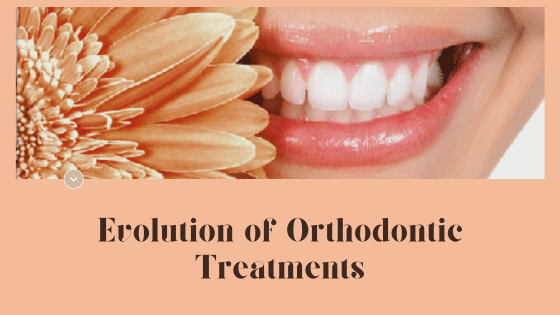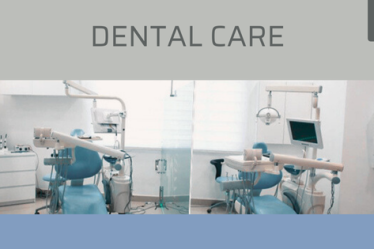
Orthodontic treatments have experienced a remarkable evolution, transforming smiles and promoting oral health for individuals across the globe. For decades, the journey toward straight teeth and proper bite alignment was synonymous with the use of conspicuous metal braces. However, the relentless pursuit of more aesthetic, comfortable, and efficient treatments has led to the advent of clear aligners—a modern solution that is reshaping the industry.
Understanding Orthodontics: A Brief History
Orthodontics, from the Greek words ‘orthos’ meaning straight and ‘dont’ meaning teeth, is a dental specialty focusing on the correction of teeth and jaws that are positioned improperly. Braces, the quintessential tool in orthodontics, have roots that can be traced back to ancient times. Archaeological findings reveal that even the ancient Egyptians attempted to straighten teeth using cord made from animal intestines. Fast forward to the 18th century, French dentist Pierre Fauchard, commonly referred to as the “Father of Modern Dentistry,” used a “Bandeau,” a horseshoe-shaped piece of iron to correct dental alignment.
The real strides in the field began in the 20th century with the standardization of orthodontic practices and the introduction of stainless steel in the 1950s, which dramatically changed the nature and application of braces. Advancements continued with the creation of adhesives that allowed brackets to stick directly to the teeth and the invention of the first “invisible” braces in the 1970s.
Transitioning to Modern Braces: Emphasis on Aesthetics and Comfort
For decades, metal braces, with their elastic bands and metal wires, were the main solution for straightening teeth. However, they had several drawbacks including discomfort, difficulty in maintaining oral hygiene, and, for many patients, the significant impact on their appearance.
Recognizing the demand for less noticeable orthodontic devices, the late 20th century saw the emergence of cosmetic alternatives such as ceramic braces that used translucent materials, or even gold-plated braces for those allergic to nickel. The next significant innovation was the development of lingual braces in the 1980s. Unlike traditional braces, lingual braces are bonded to the back of the teeth, making them invisible when smiling.
However, even with these advances, discomfort and oral hygiene challenges persisted. Orthodontists sought to address these issues with a revolutionary solution that would not only improve aesthetics but also elevate the patient experience.

The Rise of Clear Aligners: Revolutionizing Treatment
In the late 1990s, a groundbreaking shift occurred with the introduction of clear aligner systems. These systems brought a new level of discretion and convenience unseen in previous orthodontic methods. Among the pioneers, Invisalign rapidly became a household name. Invisalign offered a series of custom-made, nearly invisible aligners that gradually moved teeth into the desired position without wires or brackets.
The clear aligners are made from a thermoplastic material uniquely developed for the Invisalign treatment plan, representing a remarkable departure from traditional orthodontic methods. This system used advanced 3D computer-imaging technology to project the complete treatment plan from the initial position to the final desired position from which a series of custom-made, clear aligners were produced.
Technological Advancements: Precision and Speed
The significant advantage of clear aligners, beyond their aesthetic appeal, lies in the precision with which they are crafted. Digital scanning and treatment planning allow orthodontists to create a virtual roadmap of the patient’s dental structure, making adjustments and predictions with unprecedented accuracy. The ability to visualize the end result before even beginning the treatment has empowered patients to make more informed decisions about their orthodontic care.
Advancements in materials science have also allowed for the creation of more durable and comfortable aligners that exert the right amount of pressure to shift teeth into place. Consequently, aligners have also improved orthodontic treatment times for many cases, as the technology allows for more efficient and controlled tooth movement.
The Patient-Centered Approach: Comfort and Convenience
Perhaps one of the most significant changes in orthodontics is the shift toward a more patient-centered approach. Clear aligners cater to the lifestyle needs of patients. Removable aligners offer the convenience of easy cleaning, eating, and less frequent visits to the orthodontist, which is a substantial advantage over metal braces. Patients no longer need to forgo certain foods or struggle with flossing and brushing around wires and brackets.
Furthermore, for adults who might have been averse to the idea of wearing metal braces, clear aligners offer a chance to achieve their desired smile without compromising on appearance or comfort. For teenagers, many of whom are self-conscious about their looks, the subtlety of aligners alleviates the social stigma associated with braces.
Challenges and Considerations
Despite their benefits, clear aligners are not a one-size-fits-all solution. Complex dental issues may still require traditional braces for an effective treatment. Hence, the orthodontist’s expertise is crucial in determining the best course of action for each individual patient.
Moreover, the cost of clear aligners can be higher than traditional braces, and not all insurance plans cover them. Patient compliance is another vital element; aligners must be worn for the recommended 20-22 hours per day to achieve the desired results.
Conclusion
The orthodontic industry will undoubtedly continue to innovate, making treatments quicker, more comfortable, and more accessible. The transition from metal braces to clear aligners like Invisalign is a testament to the incredible advancements within the field of orthodontics. Despite the multiple treatment options available today, the goal remains consistent—to provide patients with a functional bite and a radiant smile that can enhance their quality of life. The relentless march of progress in orthodontic treatments illustrates humanity’s inherent desire to blend health, function, and aesthetics harmoniously.


